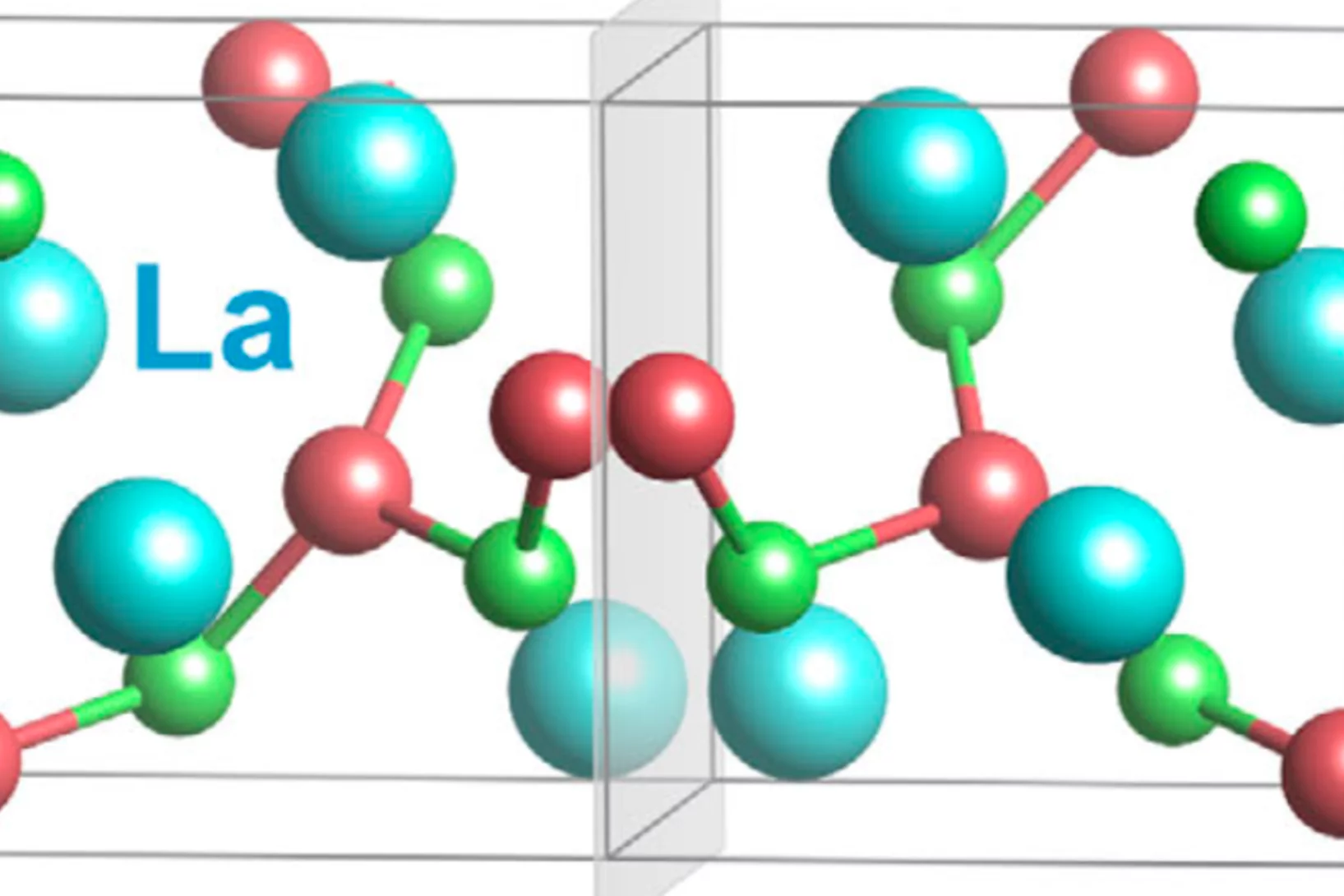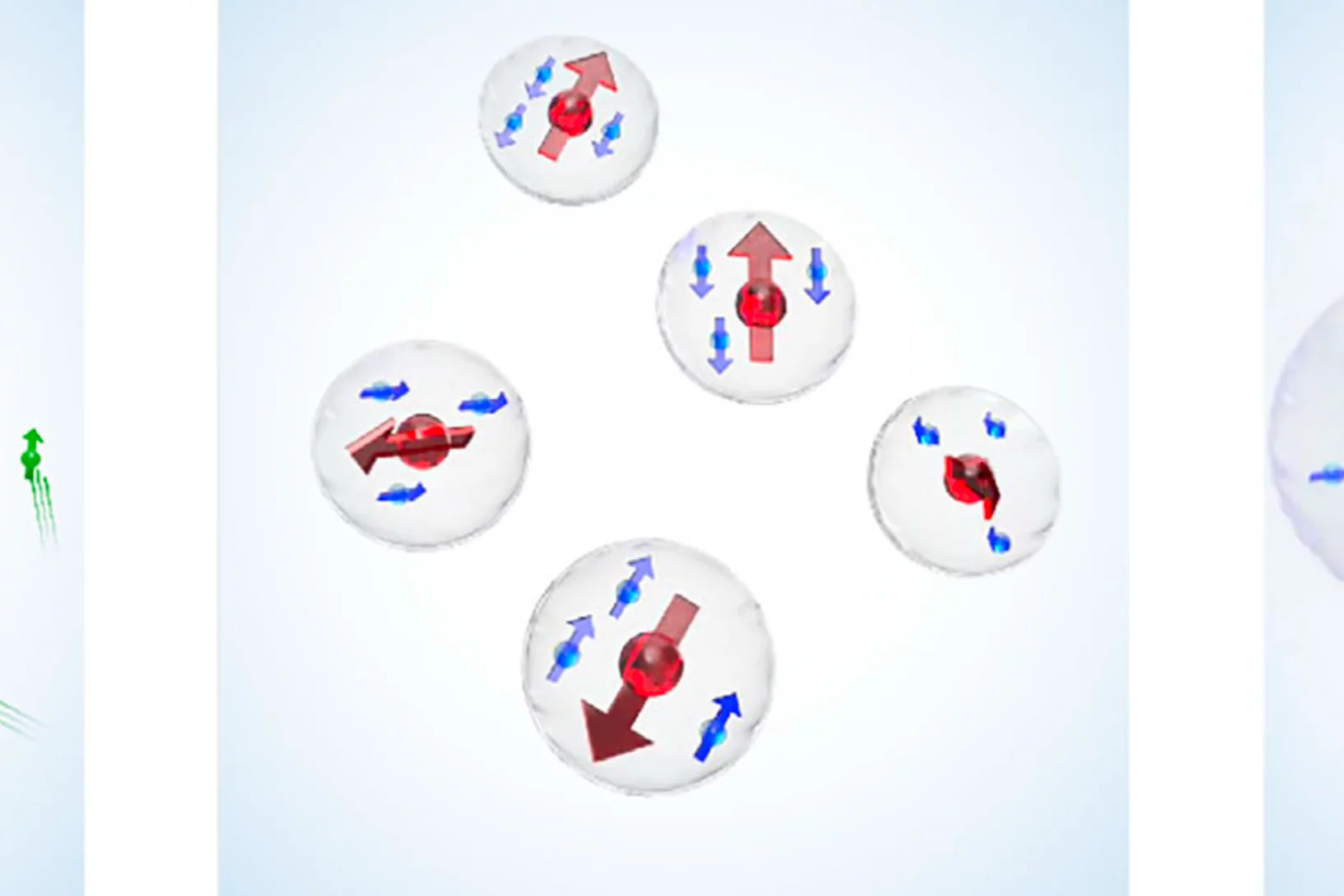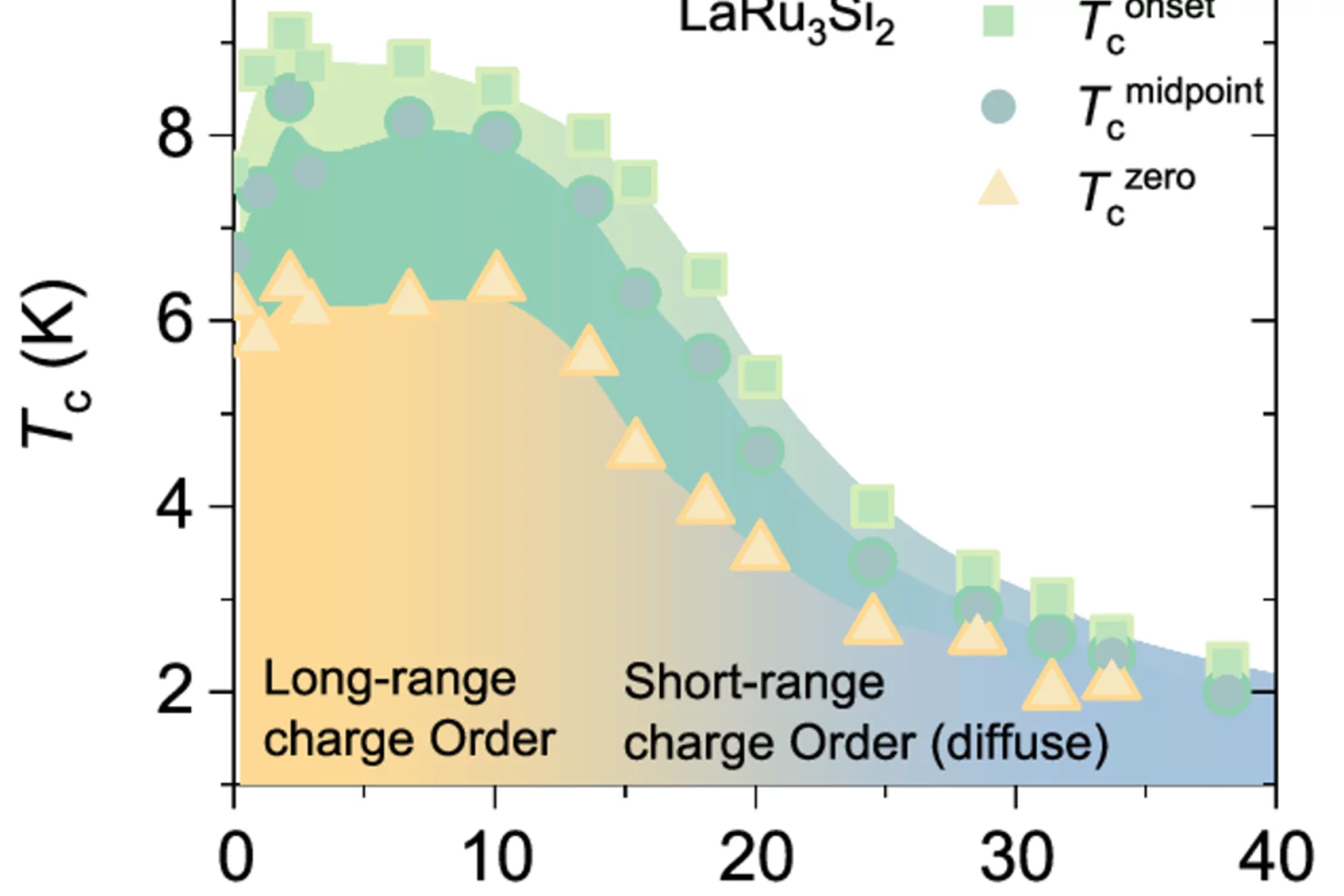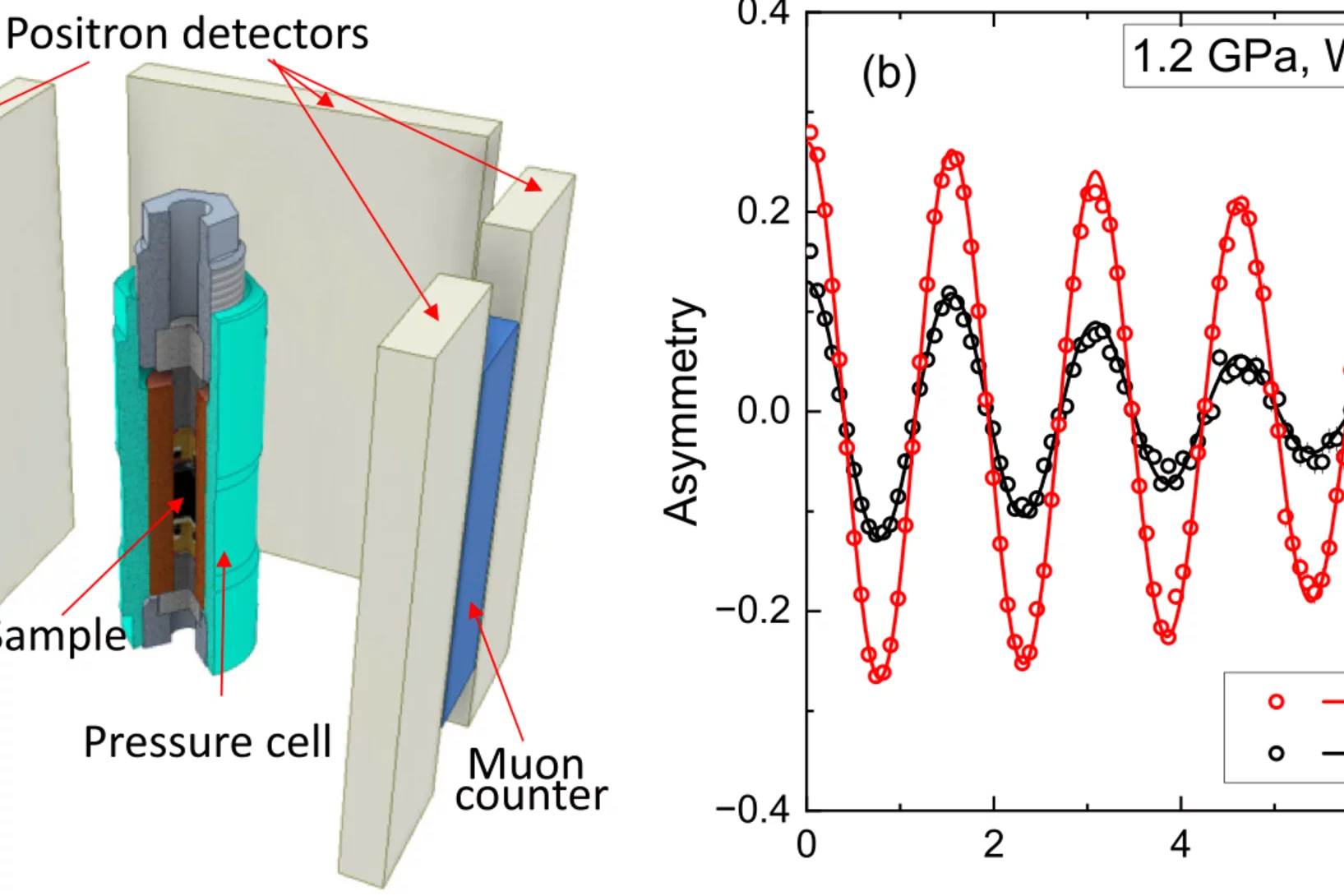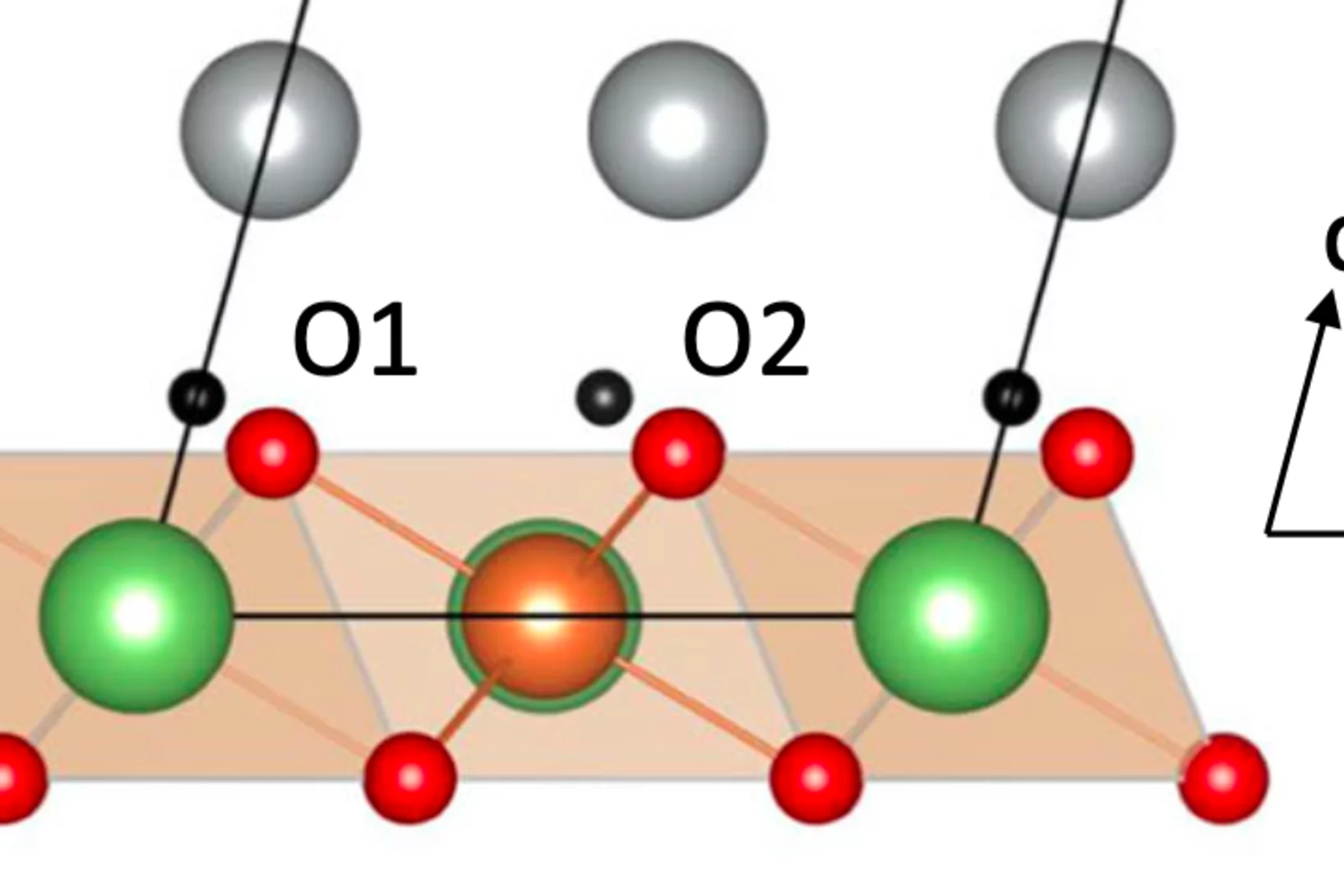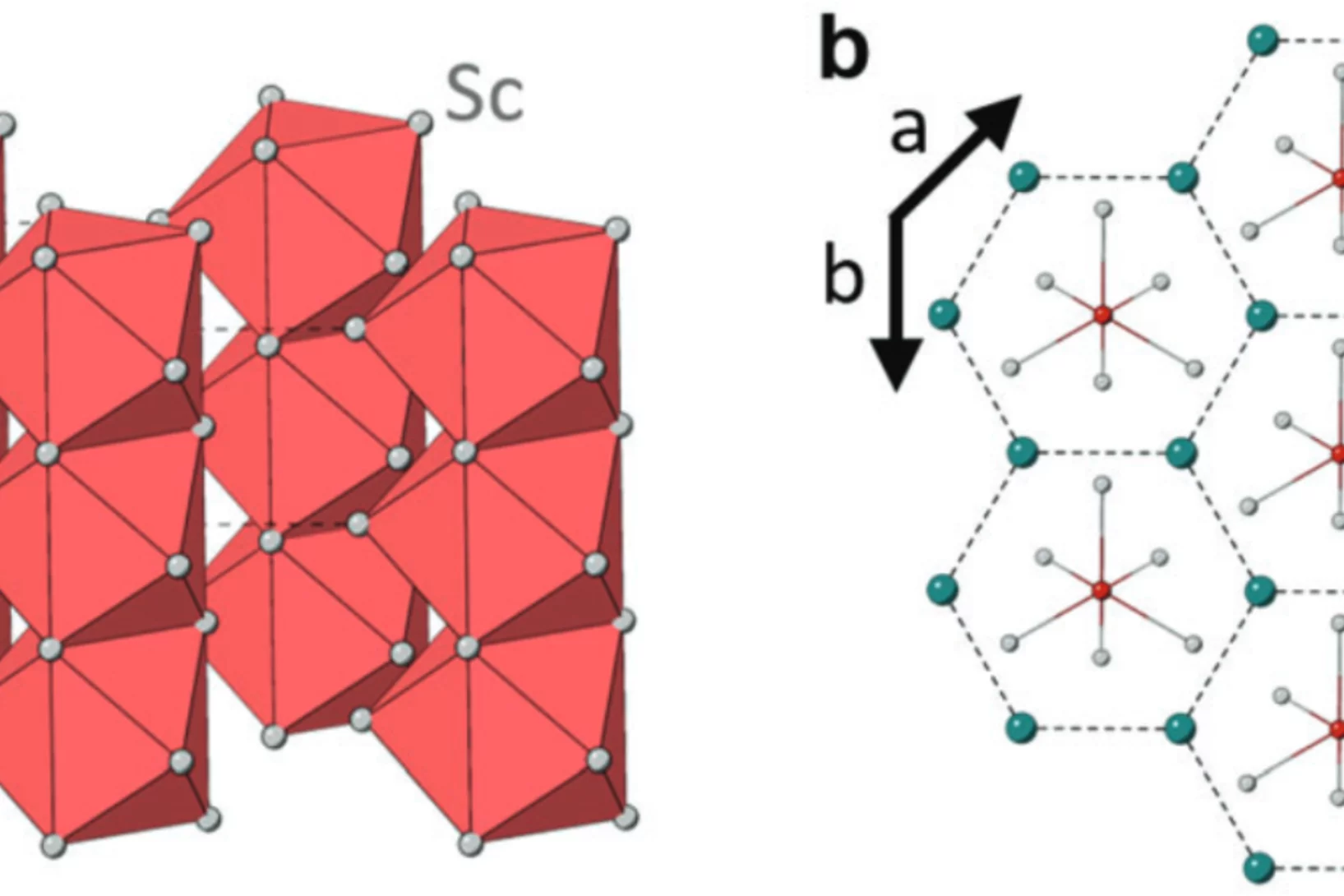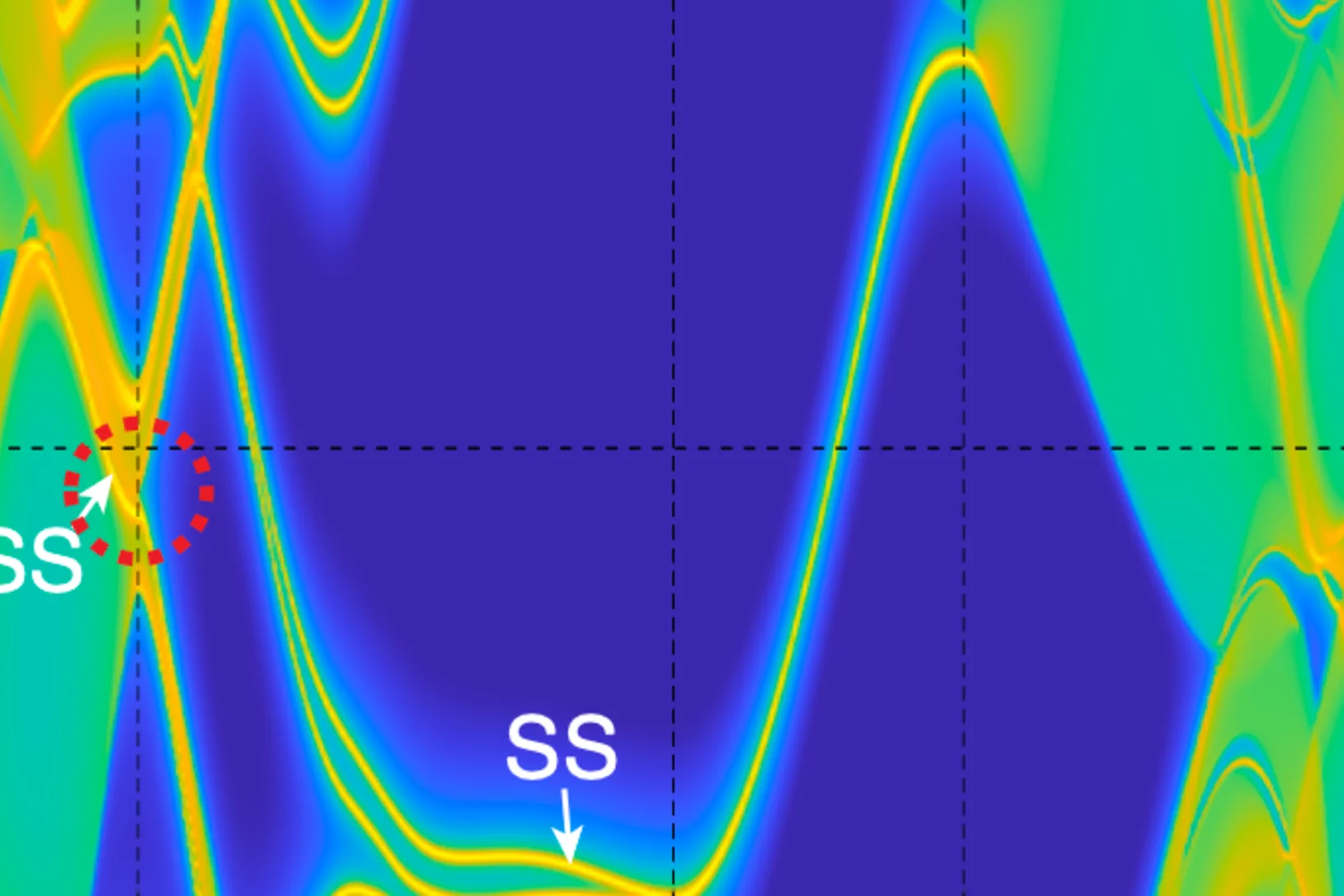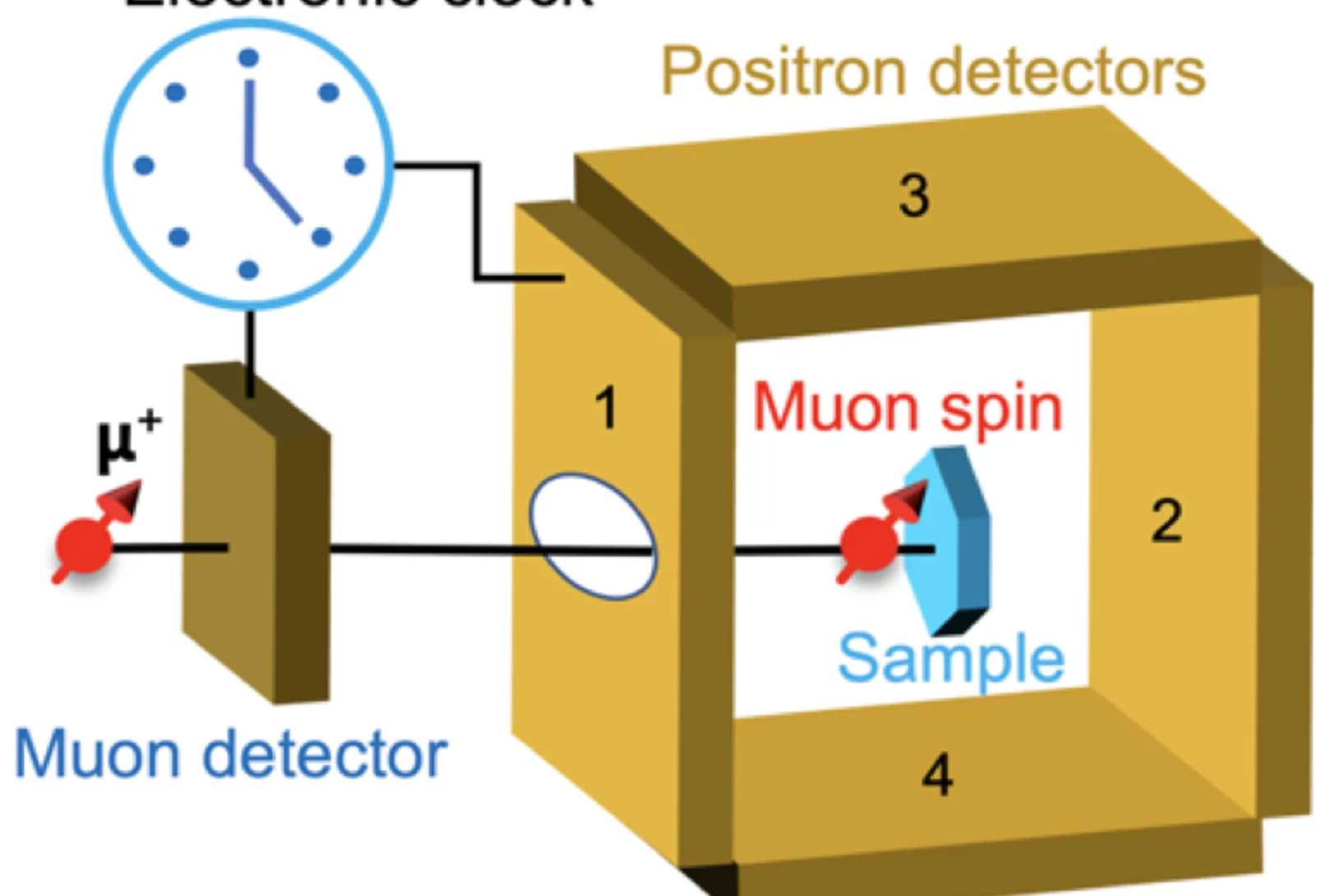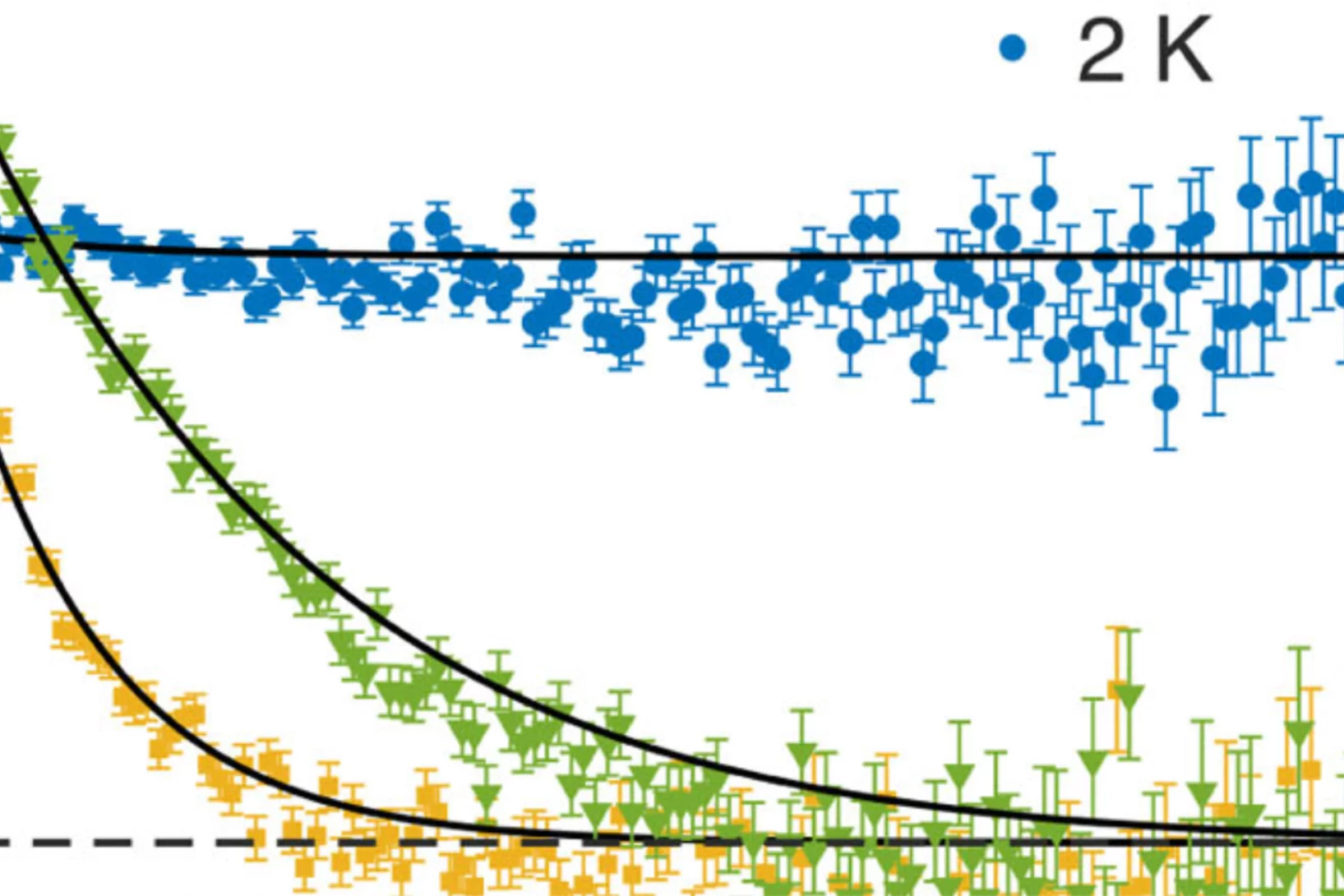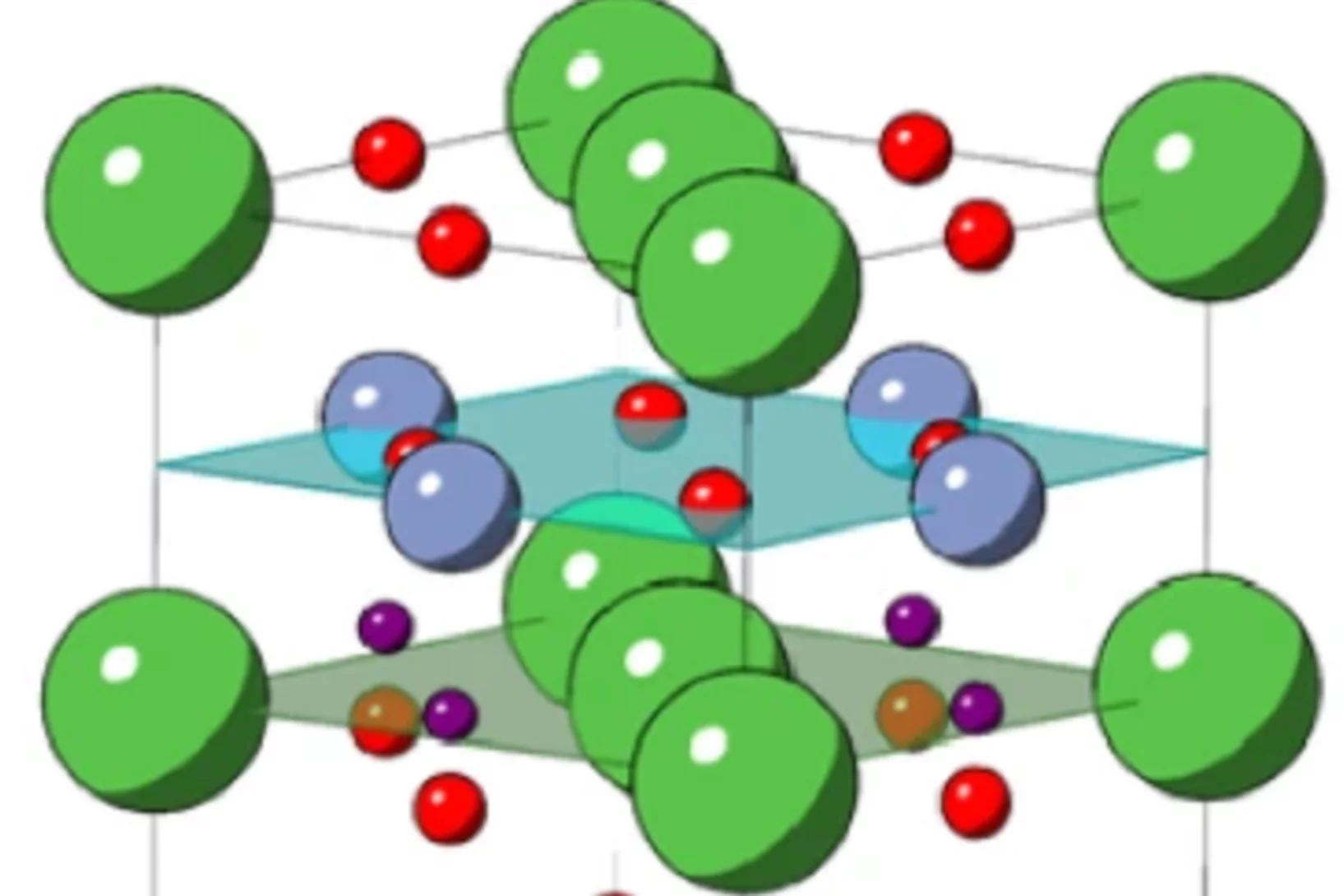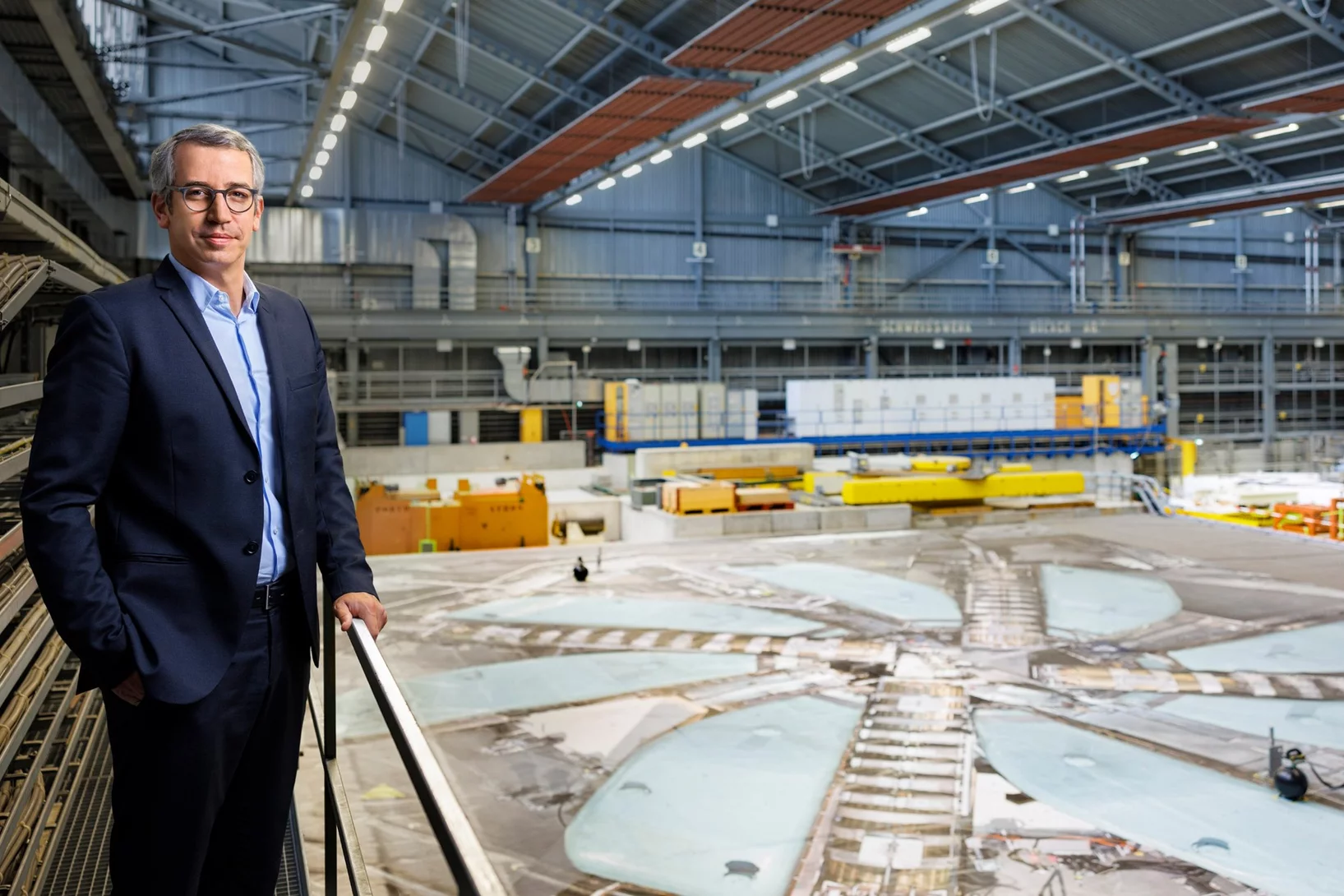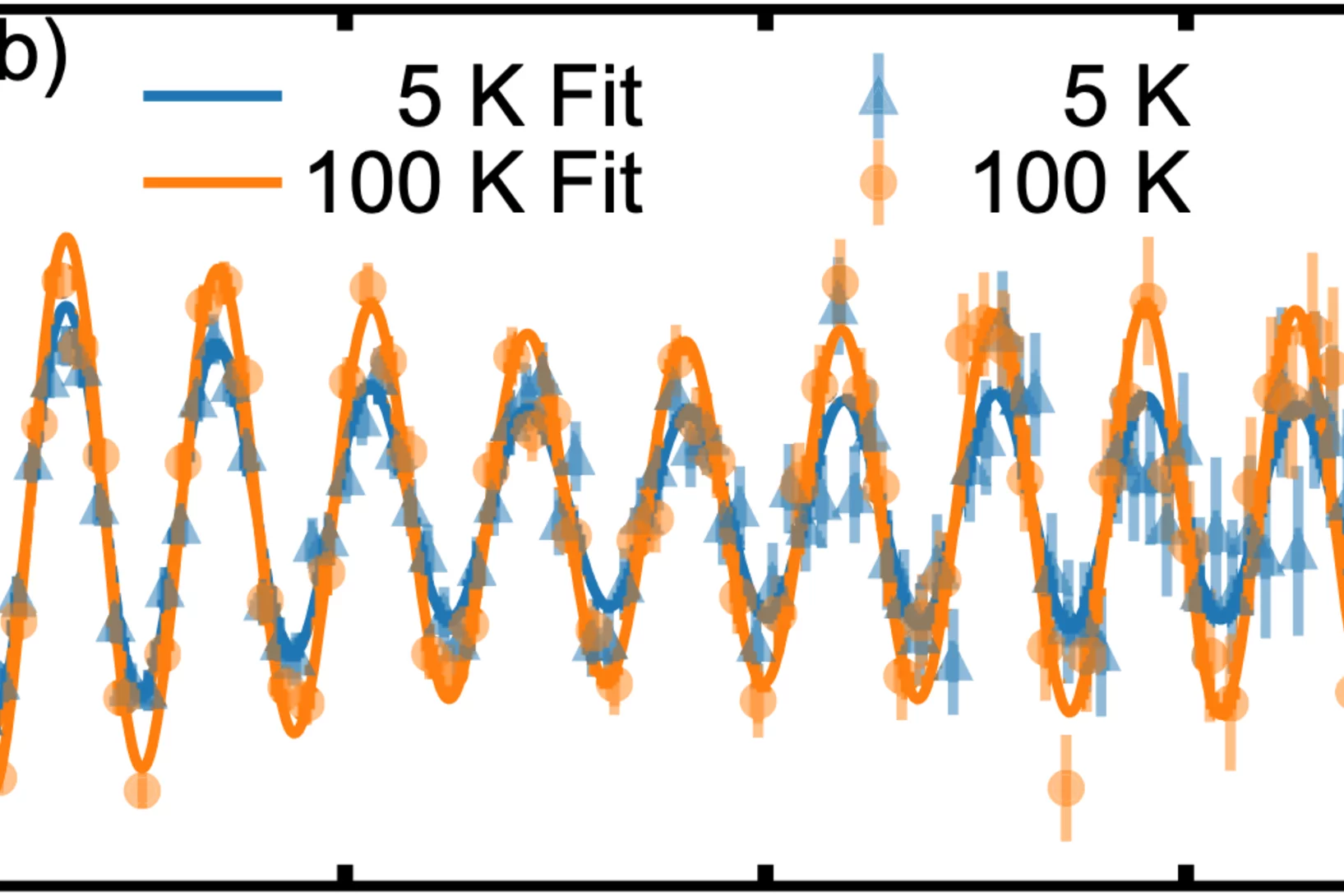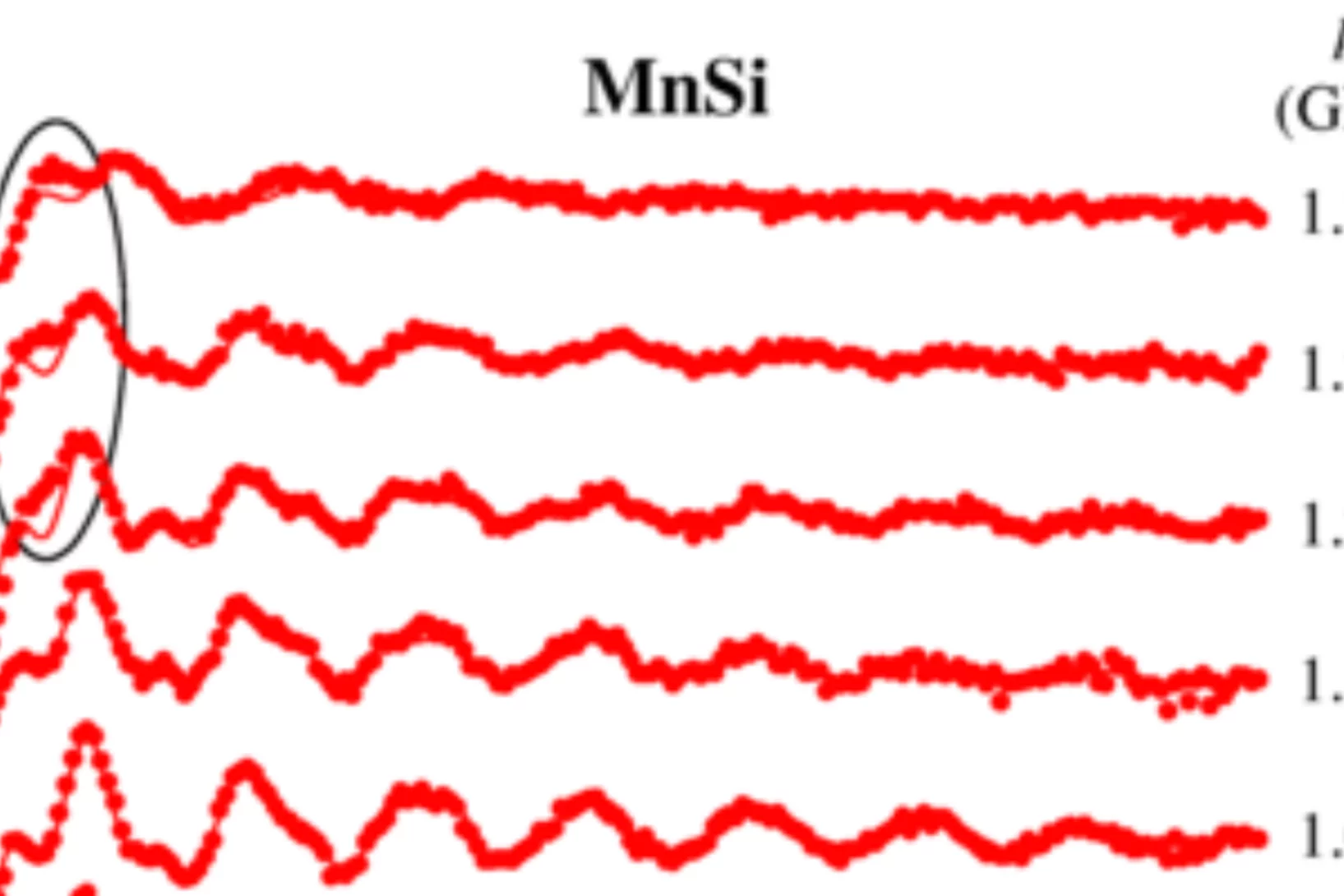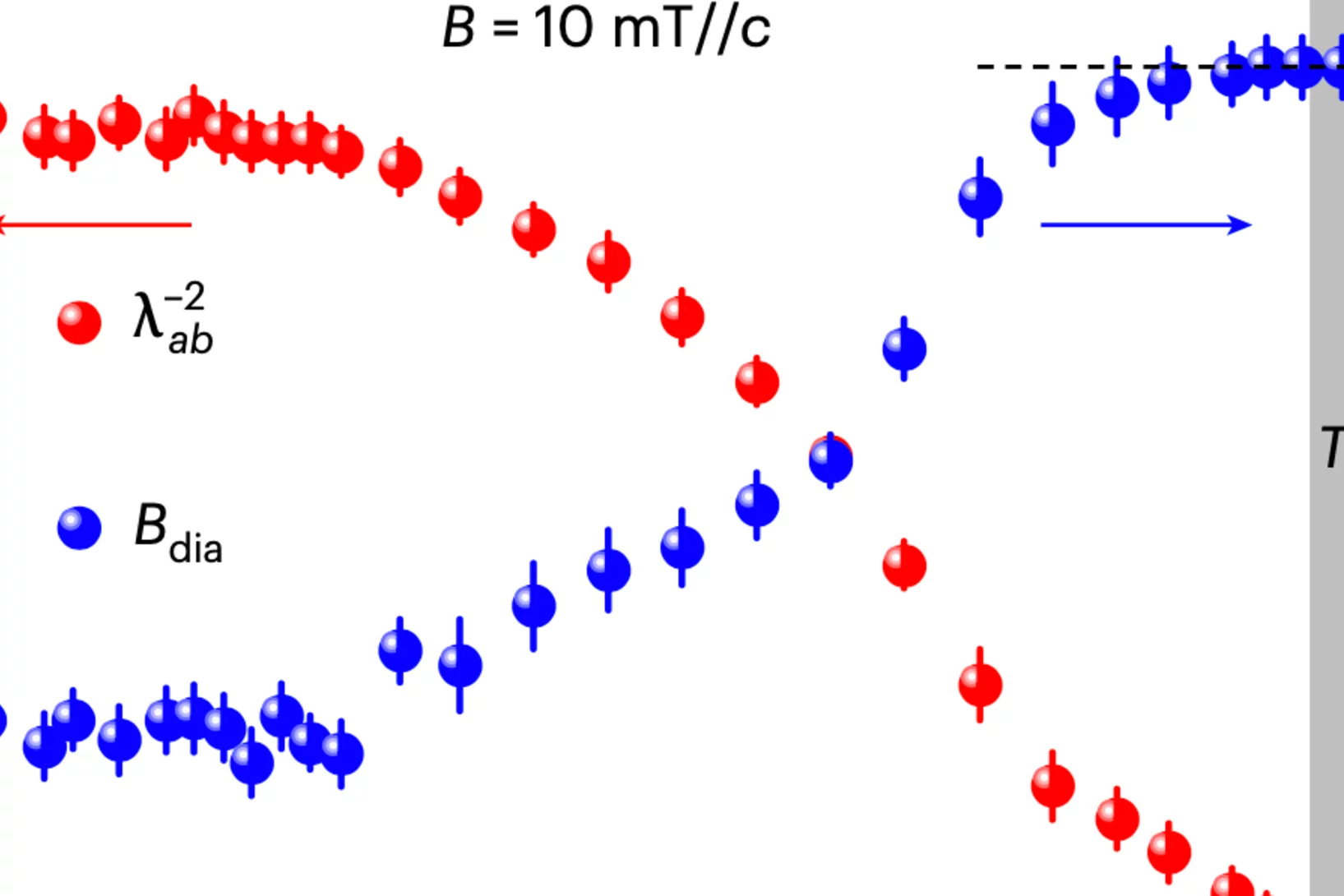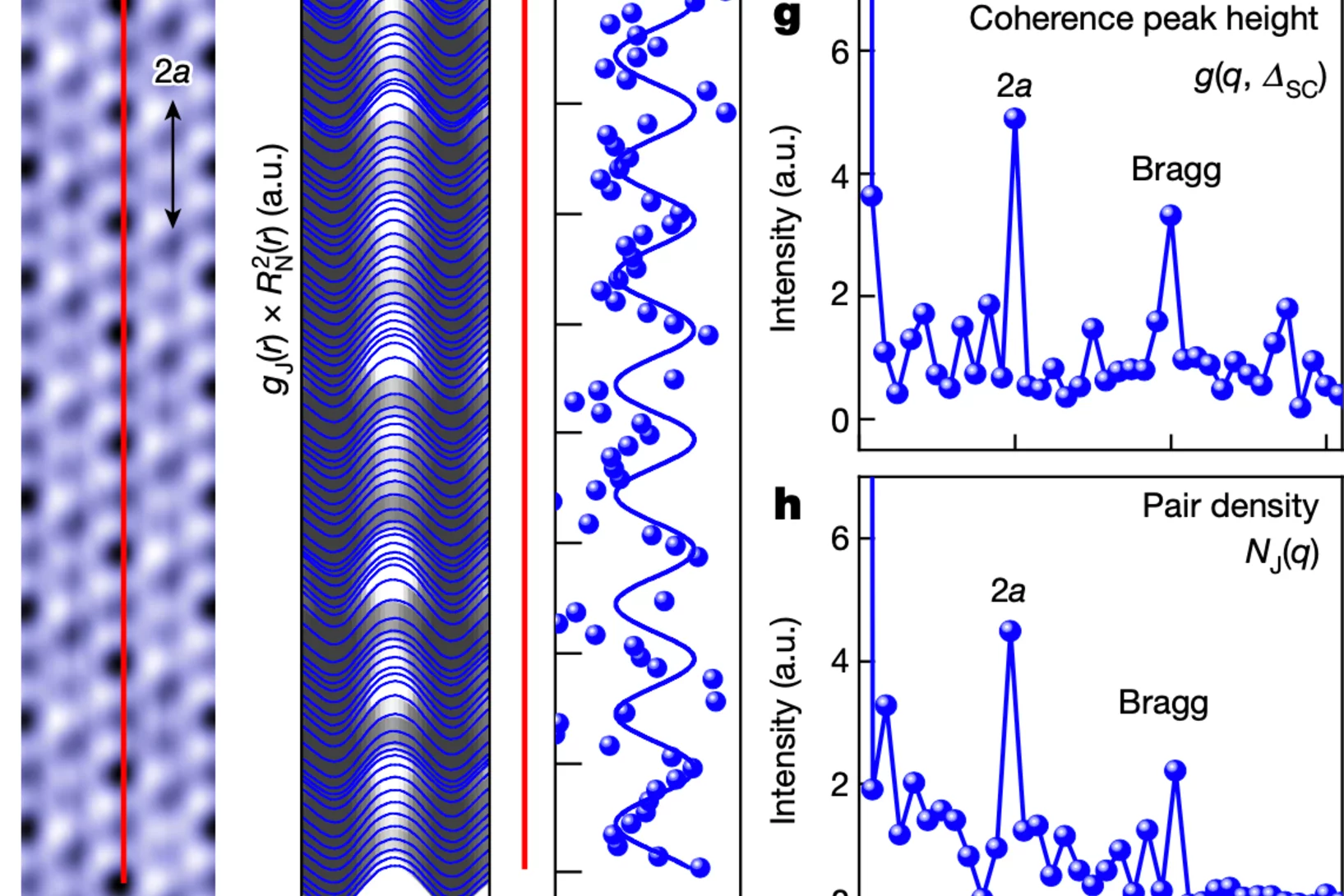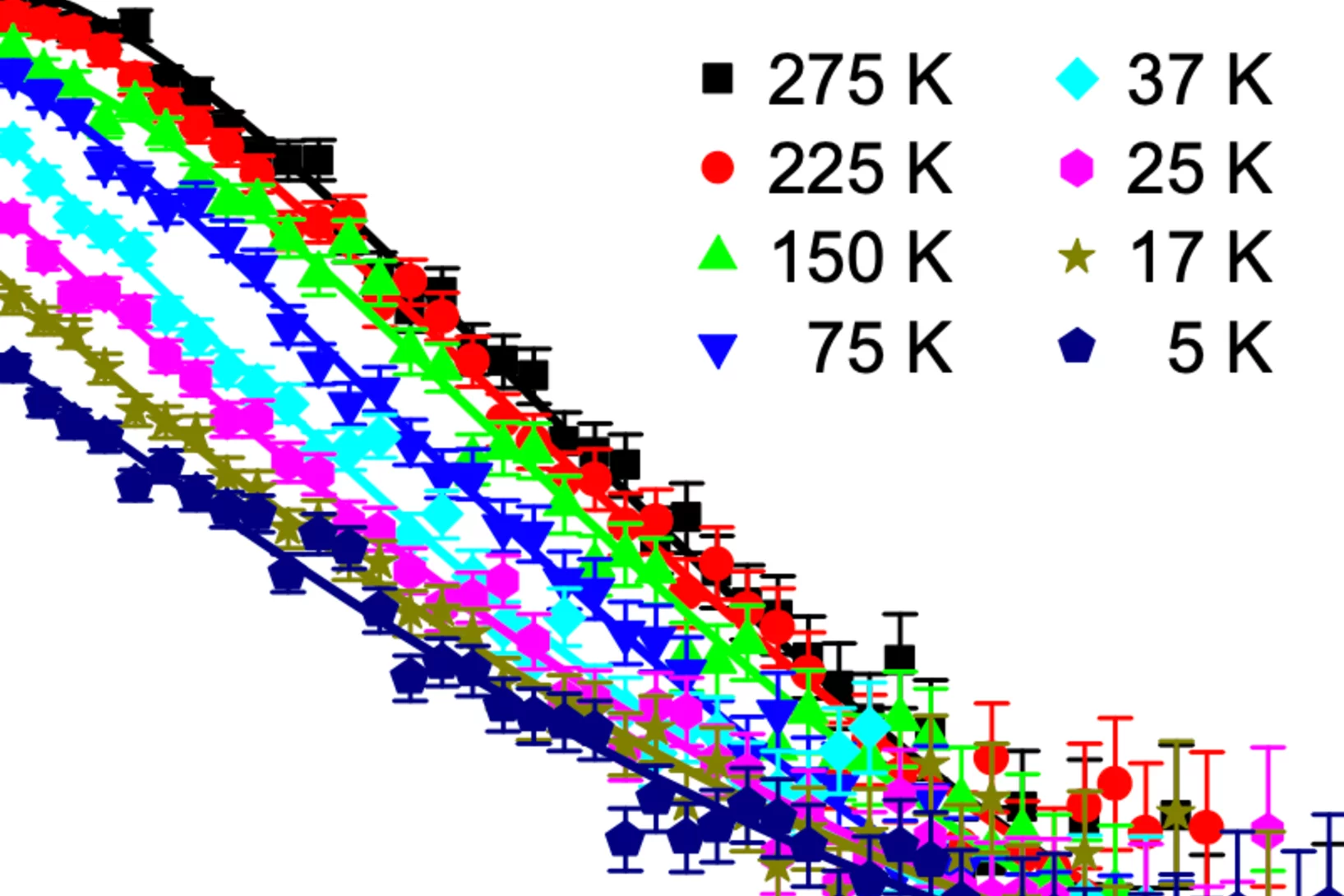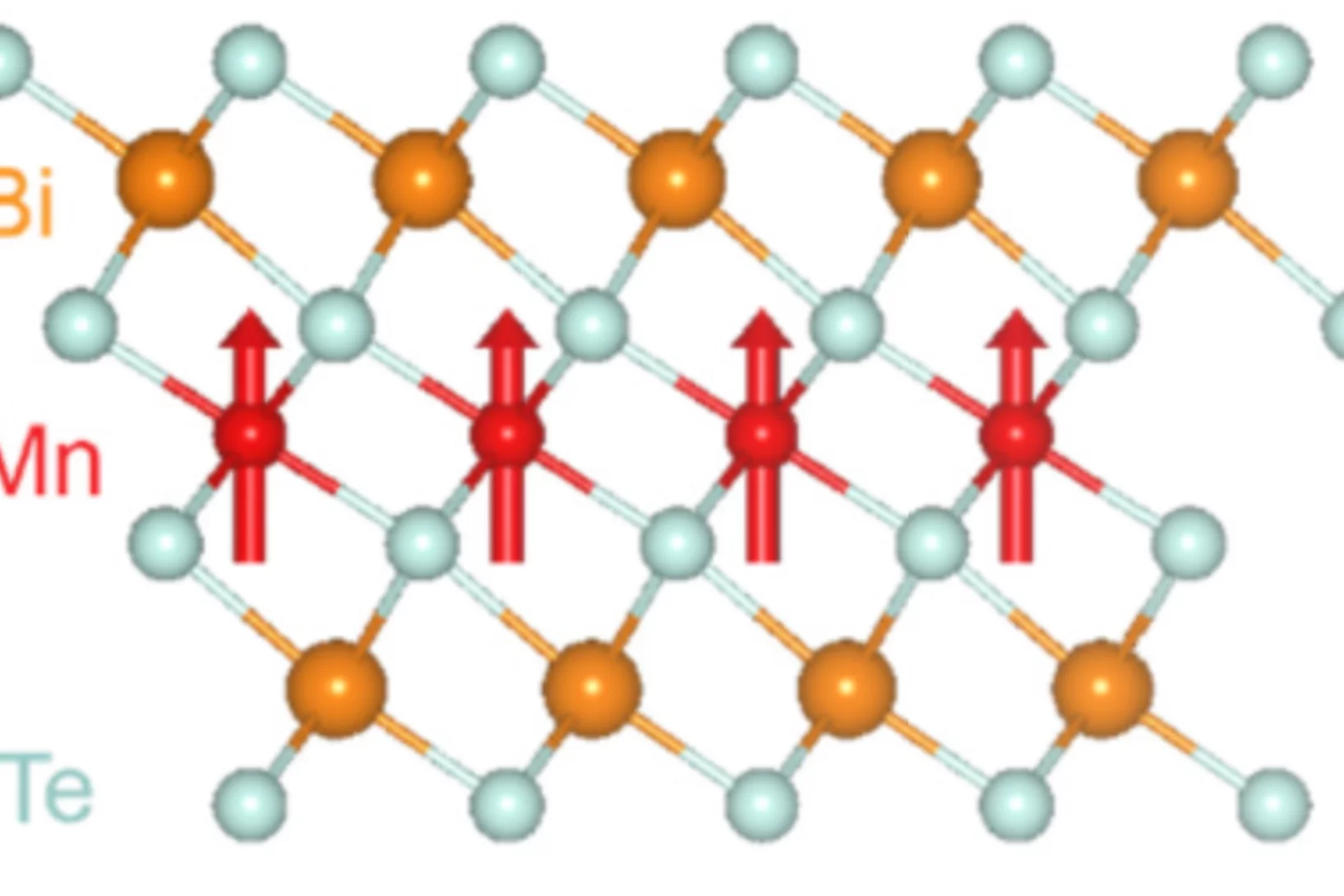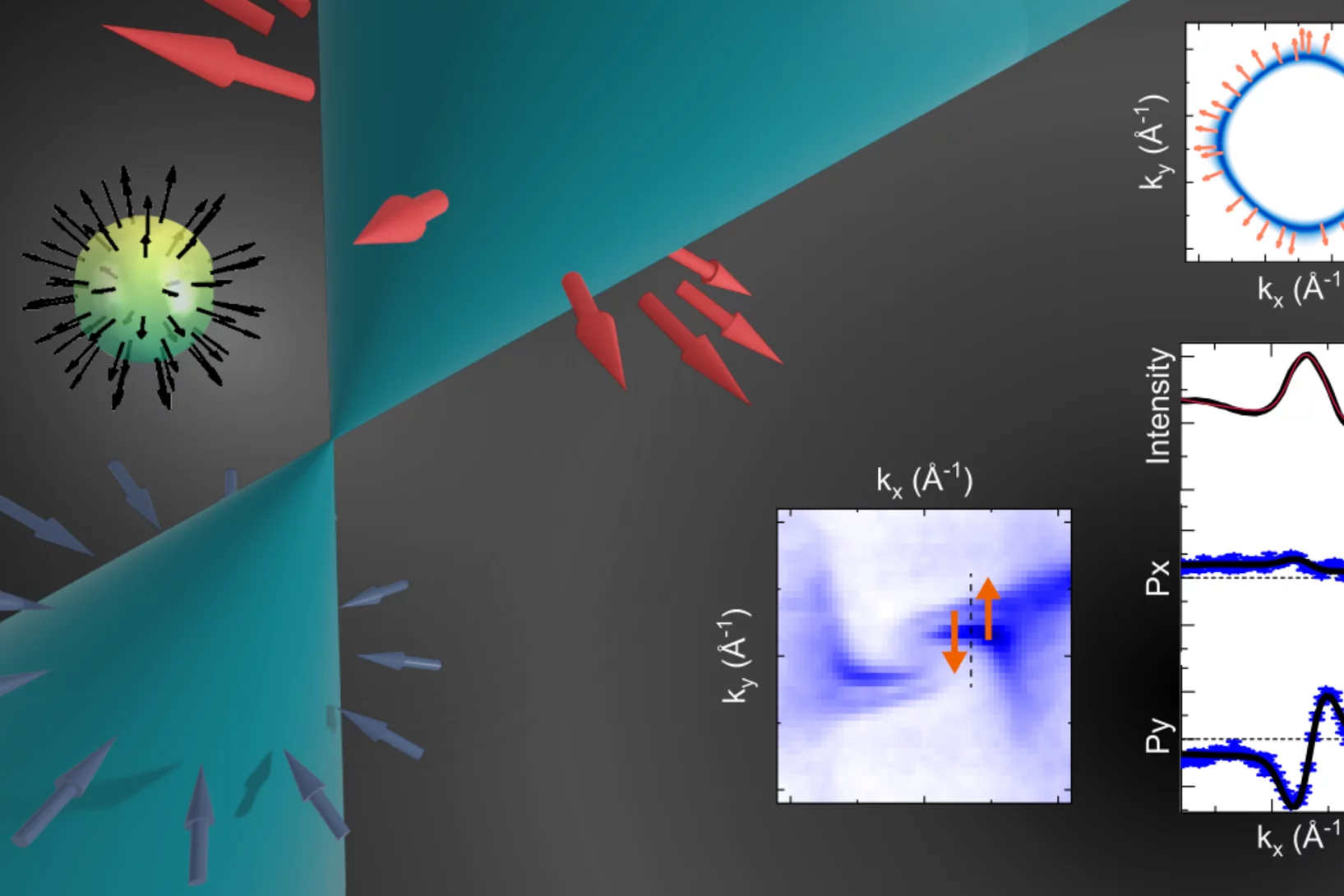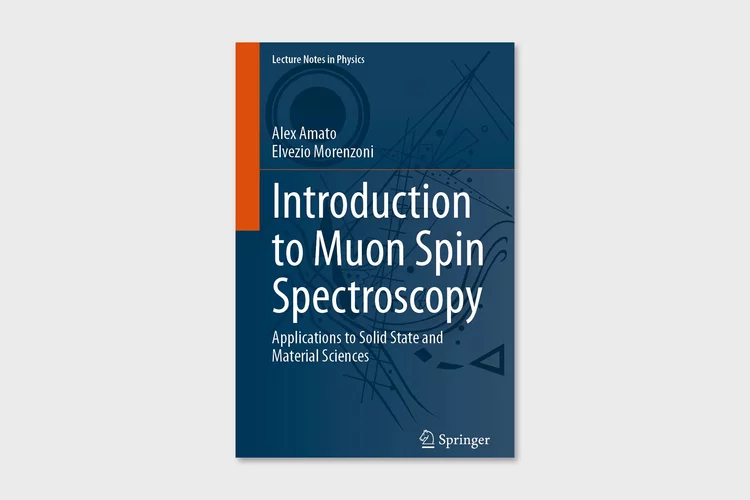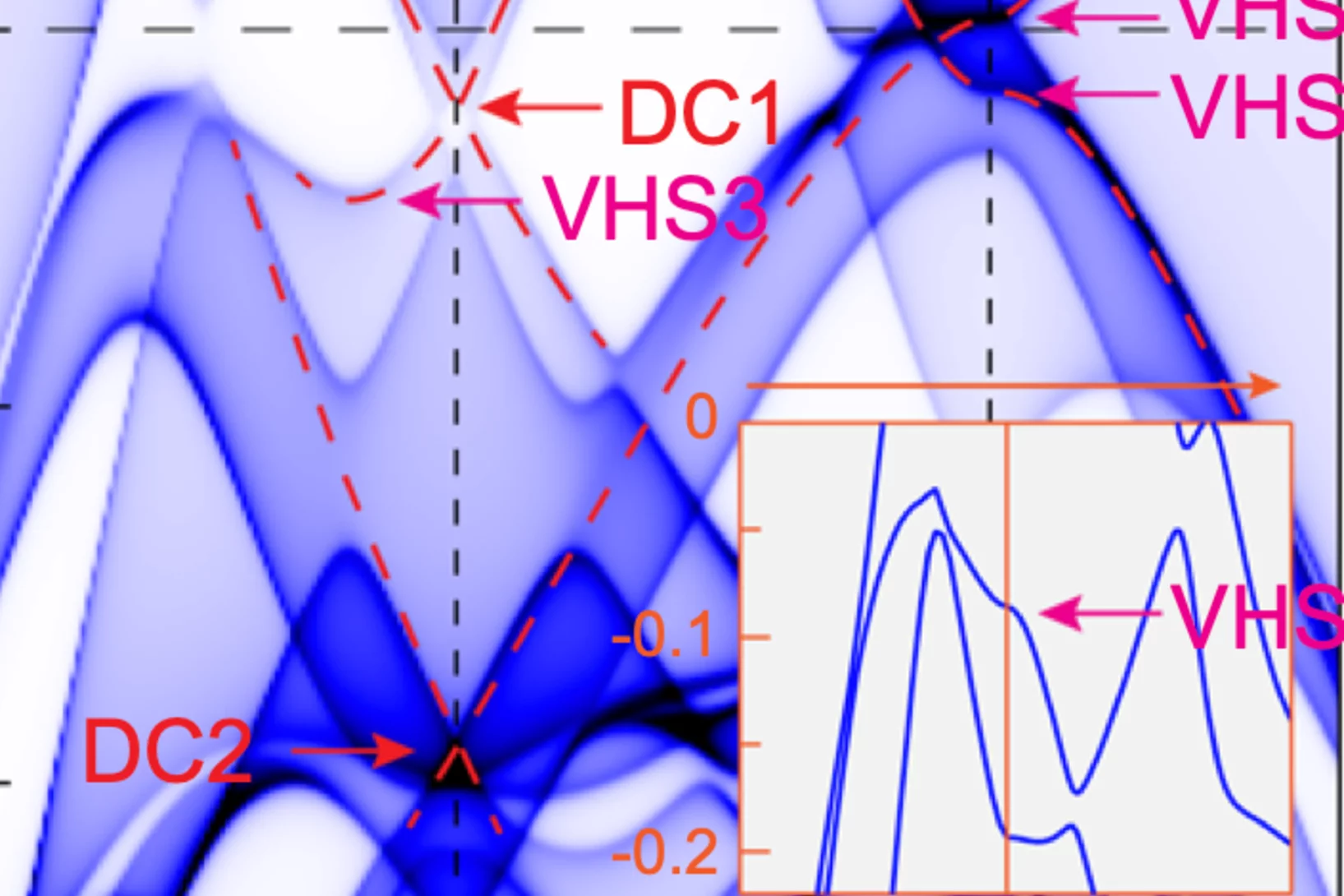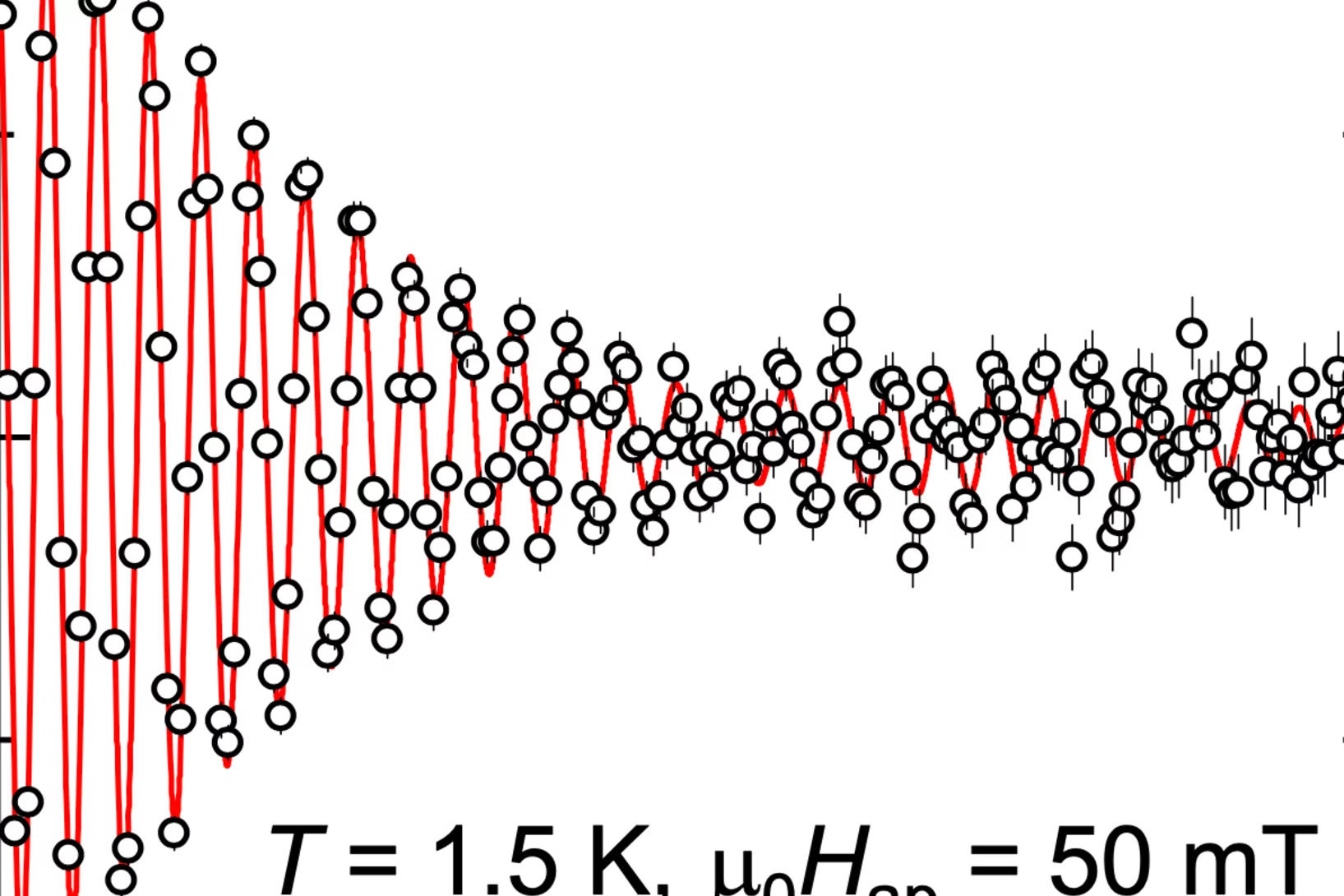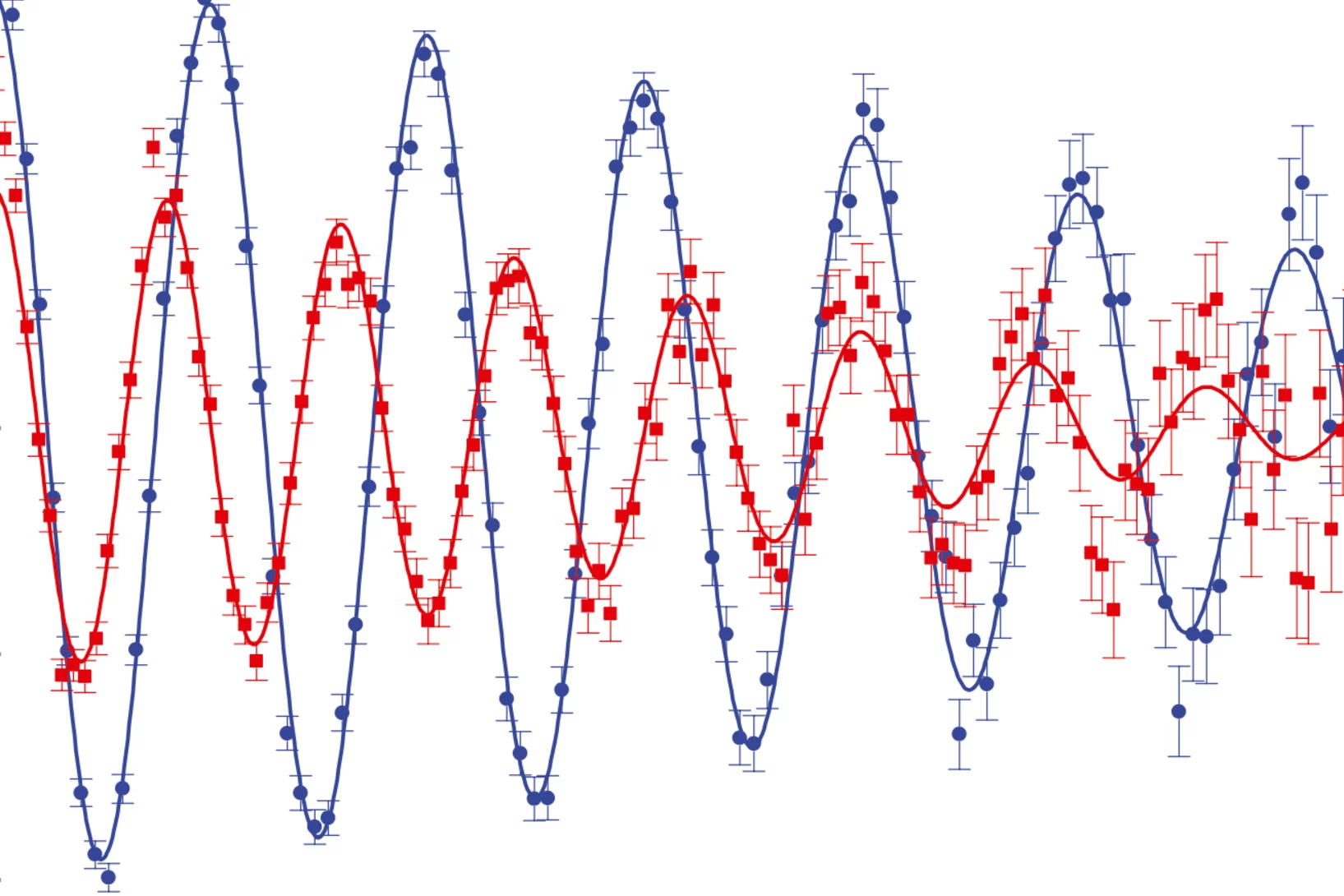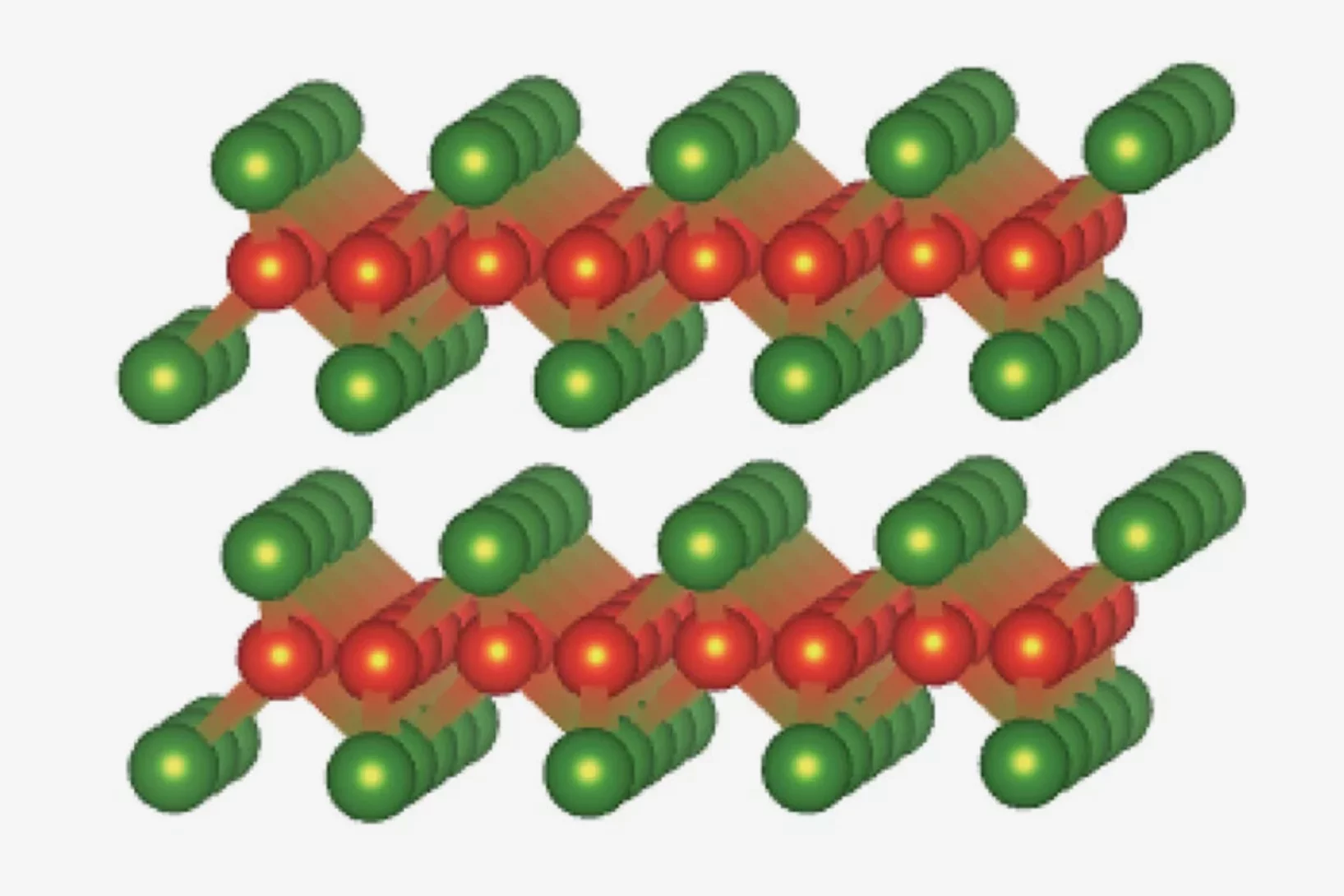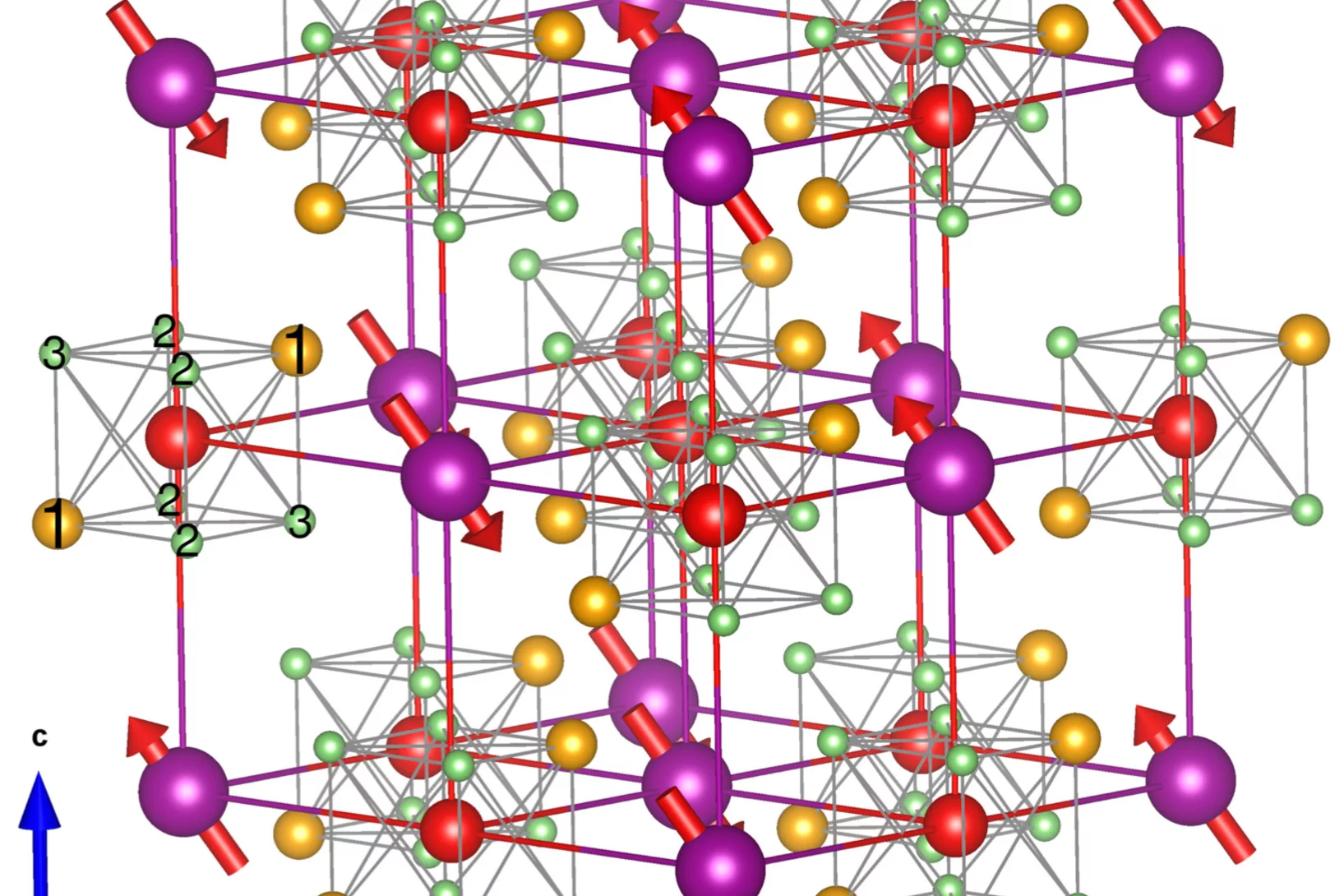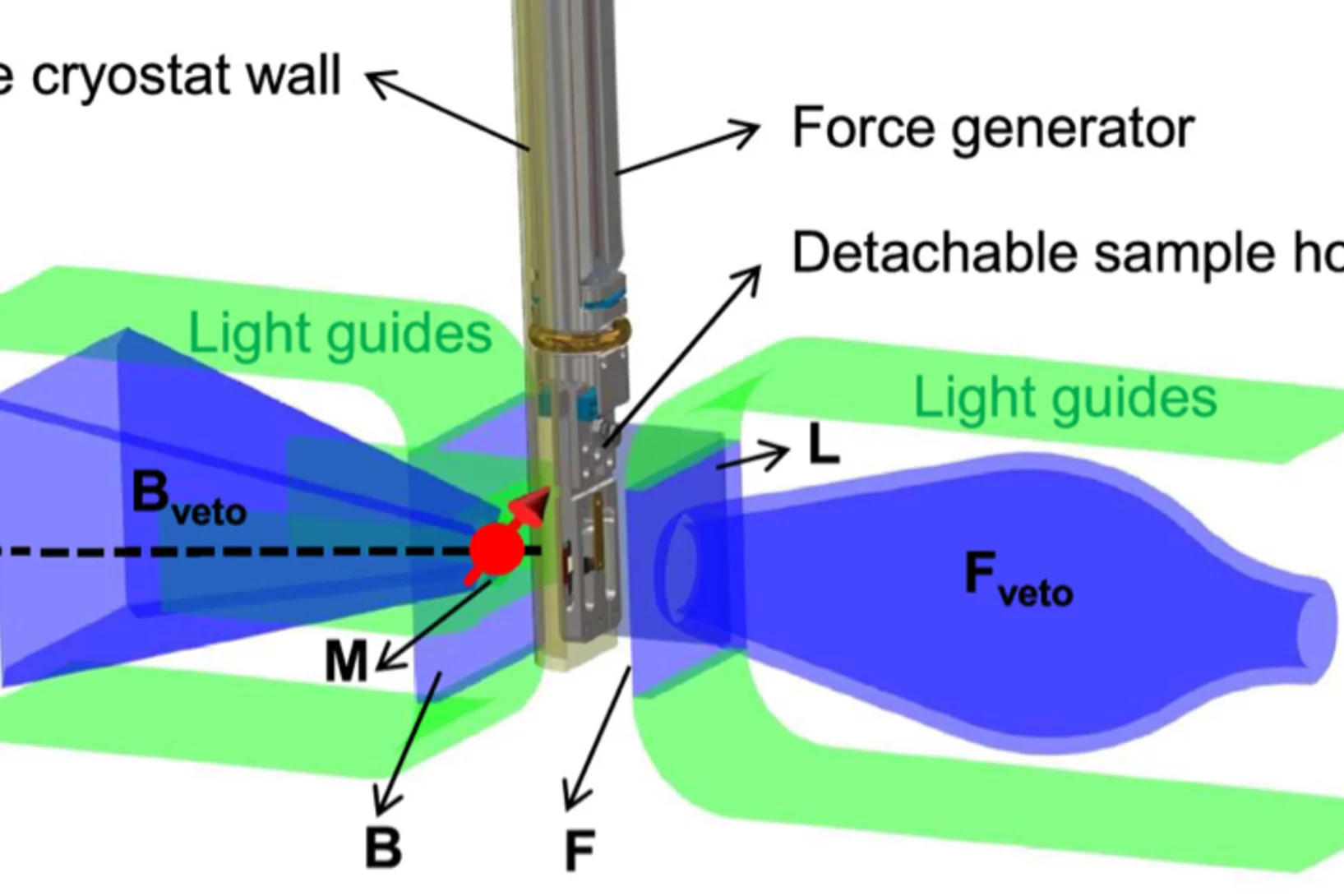Show filters
Discovery of Nodal-Line Superconductivity in Chiral Crystals
Chiral crystals, whose key feature is the structural handedness, host exotic quantum phenomena driven by the interplay of band topology, spin-orbit coupling (SOC), and electronic correlations. Due to the limited availability of suitable chiral-crystal materials, their unconventional superconductivity (SC) remains largely unexplored.
Here, the discovery ...
Ferroaxial density wave from intertwined charge and orbital order in rare-earth tritellurides
The discovery of the axial amplitude mode—commonly referred to as the Higgs mode—in charge density wave systems, such as rare-earth tritellurides, indicates the presence of a hidden order. A theoretical study proposed that this axial Higgs mode arises from a hidden orbital texture of the charge density wave, which produces a ferroaxial charge order.
However, experimental evidence ...
Observation of Magnetic Pseudogap Behavior in Phosphorus-Doped Silicon
The recent discovery of a Kondo condensate in phosphorus-doped silicon (Si:P) presents its significant potential for achieving novel many-body quantum states. Si:P exhibits Kondo condensation, characterized by an energy gap in the electronic density of states, while the precise nature of its magnetic state has yet to be determined.
Here, we utilize ...
A New Quantum Landscape: Coexisting High-Tc Superconductivity, Magnetism, and Complex Charge Order in LaRu3Si2.
Despite intense research on kagome superconductors, many fundamental questions remain—especially regarding the unconventional nature of their charge order and superconducting phases. These materials are rich in complexity, and to truly unravel their behavior, a broad and integrated approach is essential. In our study ...
Pressure effect on the spin density wave transition in La2PrNi2O6.96
High-pressure studies reveal a stark contrast between the superconducting properties of double-layer Ruddlesden-Popper (RP) nickelates La2PrNi2O7 and La3Ni2O7. While La2PrNi2O7 exhibits bulk superconductivity, La3Ni2O7 displays filamentary behavior, suggesting that superconductivity is confined to phase interfaces rather than the bulk. Since magnetism emerges ...
Pressure tuning of competing interactions on a honeycomb lattice
Exchange interactions are mediated via orbital overlaps across chemical bonds. Thus, modifying the bond angles by physical pressure or strain can tune the relative strength of competing interactions. Here we present a remarkable case of such tuning between the Heisenberg (J) and Kitaev (K) exchange, which respectively establish magnetically ordered and spin liquid phases on a honeycomb lattice. We observe ...
Tailoring the Normal and Superconducting State Properties of Ternary Scandium Tellurides, Sc6MTe2 (M = Fe, Ru, and Ir) Through Chemical Substitution
The pursuit of a unifying theory for non-BCS superconductivity has faced significant challenges. One approach to overcome such challenges is to perform systematic investigations into superconductors containing d-electron metals in order to elucidate their underlying mechanisms. Recently, the Sc6MTe2 (M = d-electron metal) family has emerged as a unique series of isostructural compounds exhibiting superconductivity across a range of 3d, 4d, and 5d electron systems.
In this study, muon spin rotation, neutron diffraction, and magnetization techniques are employed to probe ...
Superconductivity and a van Hove singularity confined to the surface of a topological semimetal
The interplay between topology and superconductivity generated great interest in condensed matter physics. Here, we unveil an unconventional two-dimensional superconducting state in the Dirac nodal line semimetal ZrAs2 which is exclusively con ned to the top and bottom surfaces within the crystal’s ab plane.
As a remarkable consequence ...
Momentum-resolved fingerprint of Mottness in layer-dimerized Nb3Br8
Crystalline solids can become band insulators due to fully lled bands, or Mott insulators due to strong electronic correlations. While Mott insulators can theoretically occur in systems with an even number of electrons per unit cell, distinguishing them from band insulators experimentally has remained a longstanding challenge.
In this work, we present ...
Vacancy-induced suppression of charge density wave order and its impact on magnetic order in kagome antiferromagnet FeGe
Two-dimensional (2D) kagome lattice metals are interesting because their corner sharing triangle structure enables a wide array of electronic and magnetic phenomena. Recently, post-growth annealing is shown to both suppress charge density wave (CDW) order and establish long-range CDW with the ability to cycle between states repeatedly in the kagome antiferromagnet FeGe.
Here we perform ...
Anomalous Hall Effect due to Magnetic Fluctuations in a Ferromagnetic Weyl Semimetal
The anomalous Hall effect (AHE) has emerged as a key indicator of time-reversal symmetry breaking (TRSB) and topological features in electronic band structures. Absent of a magnetic field, the AHE requires spontaneous TRSB but has proven hard to probe due to averaging over domains. The anomalous component of the Hall effect is thus frequently derived from extrapolating the magnetic field dependence of the Hall response. We show ....
Pressure-enhanced splitting of density wave transitions in La3Ni2O7–δ
The observation of superconductivity in La3Ni2O7–δ under pressure, following the suppression of a high-temperature density wave state, has attracted considerable attention. The nature of this density wave order was not clearly identified. Here we probe the magnetic response of the zero-pressure phase of La3Ni2O7–δ as hydrostatic pressure is applied, and find that the apparent single density wave transition at zero applied pressure splits into two. The comparison of our muon-spin rotation ...
Anisotropic Skyrmion and Multi-q Spin Dynamics in Centrosymmetric Gd2PdSi3
Skyrmions are particlelike vortices of magnetization with nontrivial topology, which are usually stabilized by Dzyaloshinskii-Moriya interactions (DMI) in noncentrosymmetric bulk materials. Exceptions are centrosymmetric Gd- and Eu-based skyrmion-lattice (SL) hosts with zero DMI, where both the SL stabilization mechanisms and magnetic ground states remain controversial. We address these here by investigating both the static and dynamical spin properties ...
IMPACT: Upgrade at PSI research facility approved
Financing for renovations to PSI’s proton accelerator facility has been approved by the Swiss Parliament.
Evidence of antiferromagnetism in ultrathin metallic (111)-oriented LaNiO3 films
Antiferromagnets with exotic spin textures promise low-power spintronic devices with extremely high operating frequencies and resistance to external perturbations. In particular, the combination of highly tunable correlated electron physics, as in complex oxides, with metallicity and antiferromagnetism is desirable but exceedingly rare. LaNiO3, the lone example of a perovskite nickelate which is metallic across all temperatures, has long been a promising candidate, but the antiferromagnetic metallic state has remained elusive. We demonstrate the emergence ...
Origin of the Suppression of Magnetic Order in MnSi under Hydrostatic Pressure
We experimentally study the evolution of the magnetic moment 𝑚 and exchange interaction 𝐽 as a function of hydrostatic pressure in the zero-field helimagnetic phase of the strongly correlated electron system MnSi. The suppression of magnetic order at ≈1.5 GPa is shown to arise from the 𝐽 collapse and not from a quantum fluctuations induced reduction of 𝑚. Our work provides benchmarks ...
Evidence for time-reversal symmetry-breaking kagome superconductivity
Superconductivity and magnetism are often antagonistic in quantum matter, although their intertwining has long been considered in frustrated-lattice systems. Here we utilize scanning tunnelling microscopy and muon spin resonance to demonstrate time-reversal symmetry-breaking superconductivity in kagome metal Cs(V, Ta)3Sb5, where the Cooper pairing exhibits magnetism and is modulated by it. In the magnetic channel, we observe spontaneous internal magnetism ...
Chiral kagome superconductivity modulations with residual Fermi arcs
Superconductivity involving finite-momentum pairing can lead to spatial-gap and pair-density modulations, as well as Bogoliubov Fermi states within the superconducting gap. However, the experimental realization of their intertwined relations has been challenging. Here we detect chiral kagome superconductivity modulations with residual Fermi arcs in KV3Sb5 and CsV3Sb5 using normal and Josephson scanning tunnelling microscopy down to 30 millikelvin with a resolved electronic energy difference at the microelectronvolt level. We observe a U-shaped ...
Observation of Mermin-Wagner behavior in LaFeO3/SrTiO3 superlattices
Two-dimensional magnetic materials can exhibit new magnetic properties due to the enhanced spin fluctuations that arise in reduced dimension. However, the suppression of the long-range magnetic order in two dimensions due to long-wavelength spin fluctuations, as suggested by the Mermin-Wagner theorem, has been questioned for finite-size laboratory samples. Here we study ...
Coexistence of Superconductivity and Antiferromagnetism in Topological Magnet MnBi2Te4 Films
The interface of two materials can harbor unexpected emergent phenomena. One example is interface-induced superconductivity. In this work, we employ molecular beam epitaxy to grow a series of heterostructures formed by stacking together two nonsuperconducting antiferromagnetic materials, an intrinsic antiferromagnetic topological insulator MnBi2Te4 and an antiferromagnetic iron chalcogenide FeTe.
Weyl spin-momentum locking in a chiral topological semimetal
Spin–orbit coupling in noncentrosymmetric crystals leads to spin–momentum locking – a directional relationship between an electron’s spin angular momentum and its linear momentum. Isotropic orthogonal Rashba spin–momentum locking has been studied for decades, while its counterpart, isotropic parallel Weyl spin–momentum locking has remained elusive in experiments. Theory predicts ...
Introduction to Muon Spin Spectroscopy
Alex Amato and Elvezio Morenzoni have published a new textbook entitled 'Introduction to Muon Spin Spectroscopy: Applications to Solid State and Material Sciences'. The book is ideal for a first course in muon spin spectroscopy (µSR), comes enriched with exercises and solutions to master the subject and includes practical examples to quantify key experimental parameters.
Phonon promoted charge density wave in topological kagome metal ScV6Sn6
Charge density wave (CDW) orders in vanadium-based kagome metals have recently received tremendous attention, yet their origin remains a topic of debate. The discovery of ScV6Sn6, a bilayer kagome metal featuring an intriguing √3 × √3 × √3 CDW order, offers a novel platform to explore the underlying mechanism behind the unconventional CDW. Here we combine ...
Tuning of the flat band and its impact on superconductivity in Mo5Si3−xPx
The superconductivity in systems containing dispersionless (flat) bands is seemingly paradoxical, as traditional Bardeen-Cooper-Schrieffer theory requires an infinite enhancement of the carrier masses. However, the combination of flat and steep (dispersive) bands within the multiple band scenario might boost superconducting responses, potentially explaining high-temperature superconductivity in cuprates and metal hydrides. Here, we report ...
SRF material research using muon spin rotation and beta-detected nuclear magnetic resonance
Muon spins precess in transverse magnetic fields and emit a positron preferentially in the spin direction at the instant of decay, enabling muon spin rotation (μSR) as a precise probe of local magnetic fields in matter. μSR has been used to characterize superconducting radio-frequency (SRF) materials since 2010. At TRIUMF, a beam of 4.2 MeV μ+ is implanted at a material-dependent depth of approximately 150 μm. A dedicated spectrometer was developed to measure the field of first vortex penetration and pinning strength in SRF materials in parallel magnetic fields of up to 300 mT. A low-energy beam available at PSI implants μ+ at variable depth in the London layer allowing for direct measurements ...
Interface-induced superconductivity in magnetic topological insulators
One of the recipes for realizing topological superconductivity calls for interfacing a topological insulator with a superconductor. In a variant of that approach, Yi et al. grew a heterostructure consisting of layers of a magnetic topological insulator, (Bi,Sb)2Te3 doped with chromium, and antiferromagnetic iron telluride. Neither of these materials is superconducting, but iron telluride is a parent compound for a family of iron-based superconductors. Interfacing the layers led to the appearance of superconductivity in the presence of ferromagnetism and topological band structure. This combination of properties makes the heterostructure a promising, although not yet proven, platform for observing chiral topological superconductivity.
Magnetostriction-Driven Muon Localization in an Antiferromagnetic Oxide
Magnetostriction results from the coupling between magnetic and elastic degrees of freedom. Though it is associated with a relatively small energy, we show that it plays an important role in determining the site of an implanted muon, so that the energetically favorable site can switch on crossing a magnetic phase transition. This surprising effect is demonstrated in the cubic rocksalt antiferromagnet MnO which undergoes a magnetostriction-driven rhombohedral distortion at the Néel temperature TN = 118 K. Above TN ...
Designing the stripe-ordered cuprate phase diagram through uniaxial-stress
Understanding the degree to which charge-stripe, spin-stripe, and superconducting orders compete/coexist is paramount for elucidating the microscopic pairing mechanism in the cuprate high-temperature superconductors. We explore the tunability of magnetism, superconductivity, and crystal structure in the stripe phase of the cuprate La2−xBaxCuO4, by employing complementary techniques under compressive uniaxial stress in the CuO2 plane. Our results show a sixfold increase ...
In-Plane Magnetic Penetration Depth in Sr2 RuO4 : Muon-Spin Rotation and Relaxation Study
We report on measurements of the in-plane magnetic penetration depth (λab) in single crystals of Sr2RuO4 down to ≃0.015 K by means of muon-spin rotation-relaxation. The linear temperature dependence of λ−2ab for T≲0.7 K suggests the presence of nodes in the superconducting gap. This statement is further substantiated by observation of the Volovik effect, i.e., the reduction of λ−2ab as a function of the applied magnetic field. The experimental zero-field ...
Hidden magnetism uncovered in a charge ordered bilayer kagome material ScV6Sn6
Charge ordered kagome lattices have been demonstrated to be intriguing platforms for studying the intertwining of topology, correlation, and magnetism. The recently discovered charge ordered kagome material ScV6Sn6 does not feature a magnetic groundstate or excitations, thus it is often regarded as a conventional paramagnet. Here, using advanced muon-spin rotation spectroscopy, we uncover an unexpected hidden magnetism of the charge order. We observe an enhancement ...
